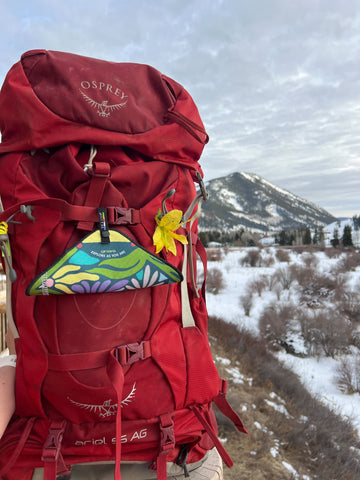
A Guide to Purchasing Pre-Loved Outdoor Gear
Exploring the outdoors is fantastic, but dealing with the associated costs and consumer waste can be less than ideal. According to the U.S. Department of Commerce's Bureau of Economic Analysis, the outdoor industry generated an impressive $1.1 trillion in economic output for the United States in 2022. This significant contribution is largely attributed to the fact, as reported by the Outdoor Industry Association, that 80% of outdoor activity categories experienced growth in participation during the same year.
Consumerism and sustainability, ideally, go hand-in-hand, and we believe that's where purchasing used gear intersects: offering a sustainable solution to enjoying the outdoors without contributing to excessive waste or breaking the bank.
Here are just *some* of the benefits of buying pre-loved gear:
- Save Money: Get quality gear without breaking the bank. You can still upgrade without buying new.
- Save the Earth: By opting for used gear, you're giving items a second life and reducing your carbon footprint. It's a win-win.
- Stand Out: Discover a pre-loved jacket that goes against the grain of what everyone else is wearing. You’re unique, and your purchases are, too.
Now that we’ve covered the perks of purchasing pre-loved gear, let’s discuss the best gear to buy used!

Tents: A tent can last up to 20 years contingent upon frequency of use and maintenance, making it an excellent item for resale. Whether it's a shift in lifestyle or a desire to stay up-to-date with the latest technology, many individuals part ways with their gear, offering you a prime opportunity to acquire quality equipment at a fraction of the cost.

Sleeping Bags: Sleeping bags are arguably one of the most important pieces of gear to get right, and if you purchase used, you can score a sweet brand. If the idea of sleeping in someone else’s bed gives you the ick, fear not. There are ways to wash a sleeping bag. Most resale hubs such as REI will vet the gear quality for you, so you won’t have to worry about tears, mildew, or broken zippers.

Camping Stoves: Camping stoves are relatively simple devices with few moving parts, making them a great candidate for buying used. As long as the stove is clean, operational, and well-maintained, you can enjoy significant savings compared to purchasing new. Check out Gear Trade, where you can browse through a wide selection of options, from backpacking stoves to car-camping setups, and even see seller ratings to ensure a trustworthy purchase.

Outdoor Clothing: High-quality outdoor clothing brands offer durable and functional apparel designed to withstand harsh conditions. Buying used outdoor clothing, such as jackets, pants, and base layers, can provide excellent value without sacrificing performance. Check out Patagonia’s Worn Wear, or Arcteryx’s ReGear program.

Backpacks: Quality backpacks are built to withstand rugged outdoor use, so buying used can be a smart choice. Look for backpacks with sturdy construction and adjustable features to ensure they meet your needs. Backpacks are best to try-on, so check out your local sports recycler or second hand stores, if you can, to ensure a comfortable fit.
We hope this guide has been helpful. Opting for used gear is an excellent method to lessen our carbon footprint, save money, and do our part to lessen landfill expansion.


